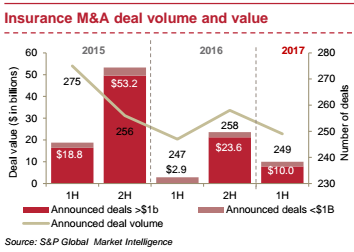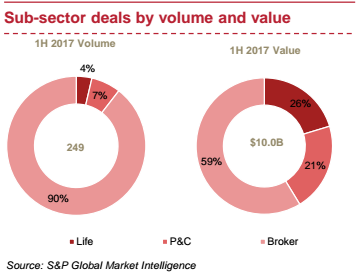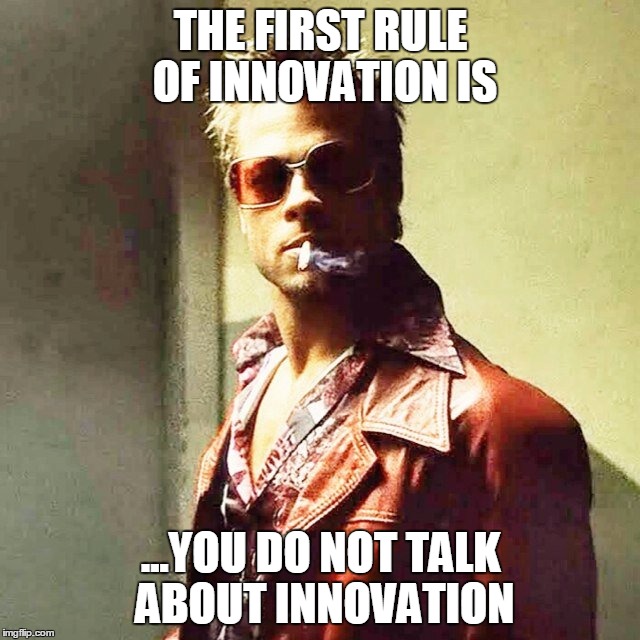Digital, data and core capabilities have changed dramatically over the last decade and continue to evolve rapidly. To help insurers track these capabilities and their progress, we created the Novarica New Normal 100 benchmark, which we’ve conducted for the last few years.
In this article, we’ll discuss the role of digital, data and core capabilities in key functional areas -- product development, marketing, distribution, underwriting, customer engagement, billing, claims and finance/operations -- and review our findings on the current state and near-term plans of insurers.
Product Development
Most insurers don’t think of digital as having a big impact on product development, but streamlining can have a real impact on speed to market. Considering digital distribution and underwriting during the product development process is also important.
Data and analytics have always been at the center of product development. As third-party data has become more abundant, and analytical tools and data management capabilities have become more advanced, product developers and actuaries can leverage new capabilities to optimize both pricing accuracy and ease of underwriting and distribution.
Products need to be instantiated into core processing systems to be offered and managed. Flexible core systems enable better product development and management.
See also: It’s Time to Accelerate Digital Change
The majority of P/C insurers report designing at least some products to be optimized for streamlined underwriting, omitting unnecessary questions and using pre-fill data. Use of machine learning in developing rating algorithms is still very uncommon, with fewer than 10% of insurers having any capabilities. However, more than 25% have current or planned pilots in this area.
Only about a third of life/annuity insurers have a digital workflow for product development. More than half are designing products to leverage the availability of pre-fill data. While only a third are currently using analytics to drive product design, an equal number are piloting that capability. A little more than a third have at least some centralized product modeling capabilities.
Marketing
With the exception of direct personal lines writers, few insurers have really advanced digital marketing capabilities—most of the attention in digital marketing is focused on distribution. Data and analytics are at the heart of marketing. Being able to profile target customers, model behavior and analyze effectiveness of marketing programs is important for engaging with potential customers. Insurers are even using existing data about prospects to “pre-underwrite” risk and offer price indications without engaging with customers. While this capability is not yet mature, a significant number of insurers report having some capabilities in this area.
Few P/C insurers see themselves having mature capabilities in any digital or data marketing area, but use of analytics and profiling is fairly widespread, with 30% of 50% of insurers reporting some capabilities. The most common area for planned pilots is customer profiling and modeling, with a quarter of insurers exploring this area further. Smaller insurers are less advanced in aggregate but have more current or planned pilots.
Among life/annuity insurers, household-level customer analysis is still unusual, but is a very common area of pilot activity. Customer profiling and behavior modeling is increasingly common, with more than a third of insurers reporting at least some capabilities.
Distribution
Distribution has been the focus of most insurers’ digital strategies, and there are many digital distribution capabilities that insurers should consider. This includes providing both information and transactional capabilities to distributors or end buyers via Web and mobile. Data capabilities in this area are a combination of interactive analytics to maximize the effectiveness of distribution channels and effective use of third-party data to streamline the buying experience. Core systems have a critical role to play in managing distribution forces and enabling rapid service to both distributors and customers.
Insurers have divergent digital capabilities to support their distributors. Fewer than half of P/C insurers have mobile new business, commissions or interactive sales materials. About half use pre-fill data to streamline application submission, and similar numbers offer quick quotes with minimal data entry. Use of analytics to drive next-best offer is rare, but about a third of larger insurers have current or planned pilots in this area.
Digital distribution maturity levels at life/annuity insurers are comparatively high. More than half of insurers report e-signature capabilities, mobile-optimized new business systems and interactive sales materials. Self-service licensing and appointments management is common at large insurers, but no midsize insurers report current capabilities. Insurers in both size classes report active pilots in this area.
Underwriting
While many insurers think of digital primarily in terms of external communications, both streamlining underwriter workflows and improving internal knowledge sharing depend on digital capabilities. Data and analytics capabilities are obviously important for underwriting, as well, and depend on core underwriting systems that support their workflows and models.
Data and analytics capabilities in underwriting are widespread, with more than two-thirds of large P/C insurers claiming some capabilities in nearly every area, including predictive scoring. But fewer than 10% claim mature functions. More than two-thirds of insurers report having paperless underwriting workflow capabilities, but fewer than half of those claim mature capabilities.
More than half of life/annuity insurers report at least some paperless underwriting workflows, and another quarter report current or planned pilots. Predictive scoring is also in use at more than a third of insurers, with more than 40% reporting pilot activity in this area.
Customer Engagement
Customer engagement is a major focus for insurers’ digital strategies. These cover engaging with customers via Web, mobile and social media or providing analytics-driven recommendations. Data and analytics-related capabilities in this area are closely related to those used in marketing. These involve both effective data consolidation and reporting as well as offline analytics to improve service levels and engagement.
Insurers continue to expand their digital customer engagement capabilities, but even basic functions like same-day email responses to customer inquiries are not universal. Only half of P/C insurers support self-service change requests or have mobile customer applications. Fewer than a quarter have online chat or co-browsing with clients, or offer policyholders a 360-degree view across different product sets.
Life/annuity insurers’ digital capabilities in customer engagement are uneven. Online chat is not widely deployed today, but more than half have current or planned pilots. While close to a quarter of insurers report mature customer mobile capabilities, more than one-third still do not have same-day e-mail response to inquiries. Online video and co-browsing with service representatives are still rare.
Analytics usage in customer engagement is also rare, with fewer than a quarter of life/annuity insurers reporting current capabilities in using analytics for retention modeling or service tiering.
Billing
Digital billing capabilities are all related to electronic communications and payments using current and emerging channels and payment mechanisms. Data capabilities are focused on analytics, both internal performance analytics and analytics to drive customer messaging, while insurers’ abilities to meet customer expectations in billing, which include consolidation and customization, are highly dependent on flexible core billing systems.
Electronic bill presentment and payment is widespread but still not universal, with only about 60% of P/C insurers supporting this capability. Credit card payments are also not universal. Using analytics to prevent premium leakage is in place at 30% to 40% of insurers, but more than a quarter of insurers are piloting this application of analytics.
Only about half of large life/annuity insurers report supporting electronic bill presentment and payment, and fewer than a third accept online or mobile credit card payments (although mail/phone card payments are more common). Analytics usage in billing is negligible, and large life/annuity insurers’ ability to customize billing schedules or present consolidated bills is very limited.
See also: Key Trends in Innovation (Parts 4, 5)
Claims
Applying digital capabilities to claims means streamlining communications across the value chain from claimants and adjusters to third-party service providers. Claims data and analytics capabilities are primarily focused on building and applying predictive models across multiple areas. Most of the digital and data/analytics capabilities involved in claims depend on core underwriting systems that support their workflows and models.
Claims is the area with the highest pilot activity among large P/C insurers. More than a third are piloting just about every digital and data/analytics capability, especially predictive fraud scoring and severity scoring. Core capabilities like skills-based routing and triaged straight-through processing are common among P/C insurers but not universal, and maturity levels are still relatively low.
About a quarter of life/annuity insurers are using predictive modeling for fraud scoring, and there are a handful of pilot programs in using analytics in claims areas. Digital capabilities like role-based third-party access are extremely limited, and few large insurers have or are investing in paperless claims processes. Skills-based routing of claims is fairly common.
Finance/Operations
While most insurers think about data and digital capabilities primarily in outward-facing roles, and most recent core investments focus on products and speed to market, insurers are also deploying technology-enabled capabilities to manage their finance and operations more effectively.
Capabilities include internal self-service, more advanced reporting and more flexible and powerful core systems that enable faster responses and better internal service levels. About half of P/C insurers report at least some current capabilities in this area. Larger insurers are generally more advanced, and pilot activity is low across the board.
Digital and data capabilities in finance and operations are increasingly common at life/annuity insurers, but still not universal. Nearly a third of insurers still are unable to allocate monthly P&Ls by product or channel, and more than two-thirds lack enterprise-wide customer data analytics capabilities.
Concluding Thoughts
While keeping an eye on the technology developments of tomorrow, insurers need to consider the capabilities available today and the impact of delaying deployment of those capabilities. Our research paints a picture of a continuing digital divide between have and have-not insurers, as well as a data divide and a core capabilities divide. In a market where growth is hard to come by, insurers need to develop better digital capabilities to serve customers and streamline processes among all stakeholders, better data and analytics capabilities to model risk and customer behavior and better core capabilities to support more agile processes and a more agile product portfolio.

 Highlights of 1H 2017 deal activity
Evolving nature of deals in 1H 2017
There were only three announced deals valued in excess of $1 billion, amounting to a total of $7.8 billion, in the first half of 2017:
Highlights of 1H 2017 deal activity
Evolving nature of deals in 1H 2017
There were only three announced deals valued in excess of $1 billion, amounting to a total of $7.8 billion, in the first half of 2017:
 Deals that did not meet our S&P screening, but are notable for their scale or intent, include:
Deals that did not meet our S&P screening, but are notable for their scale or intent, include:
 Key trends and insights
Sub-sector highlights
Key trends and insights
Sub-sector highlights
 See also: Insurance Coverage Porn
Conclusion and outlook
Even though announced deals have been light in the first half of 2017 compared with the second half of 2016, activity should intensify in the remainder of 2017 as insurers focus on cutting costs, achieving scale and enhancing and streamlining or consolidating dated technologies.
See also: Insurance Coverage Porn
Conclusion and outlook
Even though announced deals have been light in the first half of 2017 compared with the second half of 2016, activity should intensify in the remainder of 2017 as insurers focus on cutting costs, achieving scale and enhancing and streamlining or consolidating dated technologies.




















